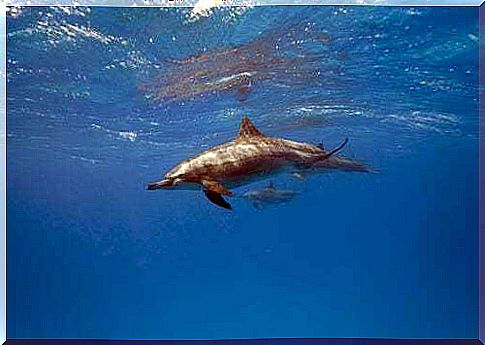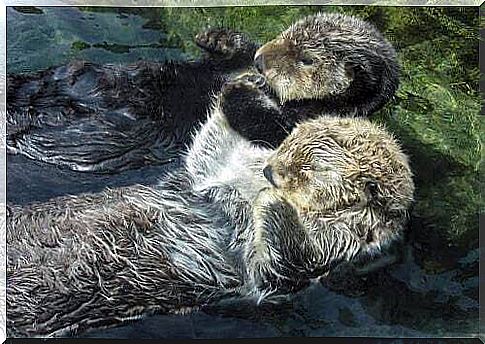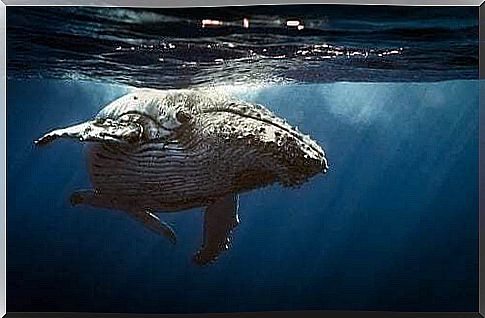Do Large Marine Mammals Sleep?

Animals, like humans, need to sleep and rest. In the case of marine mammals, this process is slightly different and, undoubtedly, surprising. In this article, we will try to answer the question: Do large marine mammals sleep?
What are the large marine mammals?
This group of animals includes about 130 different species. All have more or less adapted to life in the water : some, for example, have hydrodynamic bodies and limbs that facilitate movement in water and at great depths.
In general, marine mammals can be divided into three large groups:
- Order of the Sirenia : for example, manatees belong to this group.
- Cetaceans : including whales, belugas and dolphins, among others.
- Caniformes, among which we can find mammals that also spend time on land. This order includes seals, otari, walruses and even the polar bear.
What does it mean to sleep?
To answer the question of whether large marine mammals sleep, it is crucial to try to understand what sleep means. Do you think that fully answering this question is still difficult. Sleeping is a physiological state and a necessity. Sleep helps balance some internal physical and psychic processes, which is why it is vitally important.

Sleep can be divided into five stages. During these phases, something happens: voluntary movement and muscle activity decrease until it is stopped. This implies that the muscles relax completely and brain activity is also impaired. So, do large marine mammals sleep? How do they do it?
How do large marine mammals sleep?
To solve the problem of movement, many species of aquatic mammals have resorted to the so-called one-hemispheric dream. This long word that is so long means that while one part of the brain “sleeps”, the remaining hemisphere remains alert and active.
It should be noted that this type of sleep is not unique to marine animals only, as it also occurs in birds and some reptile species. It has also been shown that the hemispheres are switched on and off alternately, so that both sides of the brain rest equally.
This mechanism assumes that, for example, marine mammals can continue to breathe. While respiration in the rest of mammals is an involuntary process, in cetaceans it is completely voluntary. The solution when they sleep is to turn to the active part of the brain to ensure that breathing continues to occur normally.

Unispheric sleep also allows marine mammals to swim and keep moving. In this way, in addition to maintaining their position, they succeed in the difficult task of rising to the surface to breathe. This phenomenon even helps them to maintain their body temperature.
Other curiosities about the sleep of large marine mammals
Recent studies have discovered what underlies the sleep phenomenon in these types of animals. It is a closely related molecule in the brain called acetylcholine.
The results, published in a prestigious scientific journal, suggest that this compound is found in high concentrations on the “awake” side of the brain, and is almost non-existent on the sleeping side.
As a last curiosity, we would like to focus on the sleep of the dolphin. In addition to being one of the marine mammals with unhemispheric sleep, it is really curious to note how dolphins sleep with one eye open, which alternates according to the hemisphere of the brain that is active. This allows them to see what is happening around them and to maintain a certain state of alert against any kind of danger.









